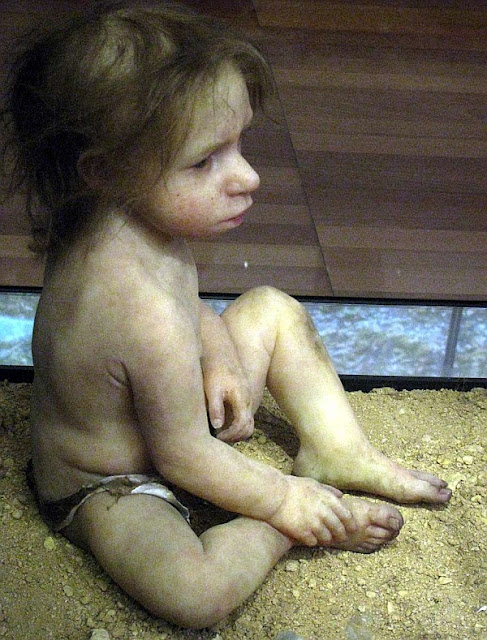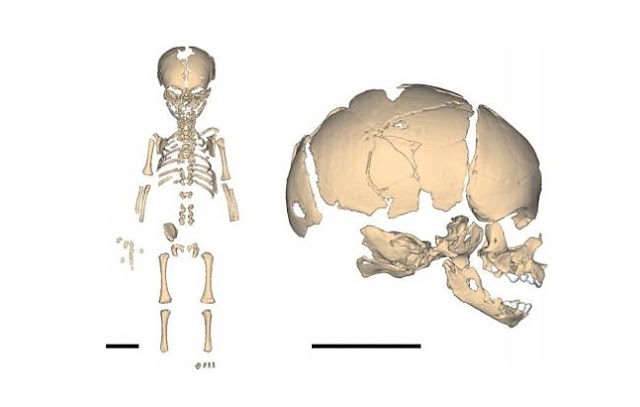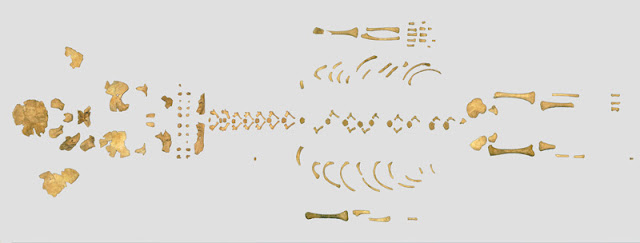If a Neanderthal were to sit down downwards side past times side to us on the underground, nosotros would in all likelihood outset notice his receding forehead, prominent forehead ridges together with projecting, chinless face.
 |
| Reconstruction of a Neanderthal youngster from the Musee National de Prehistoire in Les Eyzies de Tayac, French Republic [Credit: Don Hitchcock] |
The evolutionary lines of modern humans together with Neanderthals diverged simply about 600,000 years ago. Paleoanthropologists know from os finds that Neanderthals possessed non alone a receding forehead, prominent forehead ridges together with projecting, chinless face, but also a dissimilar physique. They had to a greater extent than robust bones, a wider pelvis together with shorter limbs. This may bring been an evolutionary adaptation to the colder climate of Europe together with Asia, every bit a to a greater extent than compact trunk loses less oestrus to the environment. However, the skeletal differences may also bring arisen every bit a trial of dissimilar lifestyles together with action patterns, because mechanical stresses require upon the formation of bones.
The instant specimen was an infant no to a greater extent than than iv months onetime from a cave close the hamlet of Le Moustier inward the French Dordogne. “Both skeletons were exceptionally good preserved. Moreover, they come upwardly from ii sites that are widely separated geographically, together with thence they aren’t simply sampling a restricted purpose of the Neanderthal range,” says Tim Weaver from the University of California, Davis, together with the Max Planck Institute for Evolutionary Anthropology.
 |
| Virtual reconstruction of the Mezmaisakya Neanderthal (a) Skeleton (b) Skull inward correct lateral stance (Scale bars: 5cm] [Credit: National Academy of Sciences of the USA] |
Although maternal diet together with action may bring influenced the evolution of the neonatal skeleton, the researchers believe that genetic differences are a to a greater extent than probable explanation. Some findings, such every bit shorter limbs, are consistent amongst the climate hypothesis, which states that the Neanderthal trunk was adapted to cold, land others, such every bit an elongated pubic bone, are to a greater extent than hard to explicate but may survive related to nativity or gait.
The written report is published inward Proceedings of the National Academy of Sciences.
Source: Max Planck Society [May 26, 2016]






0 comments